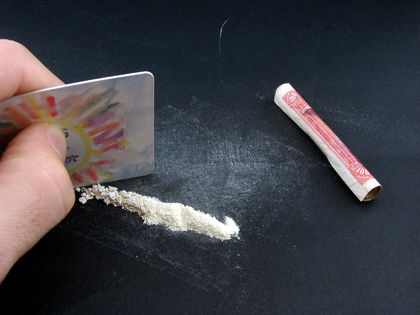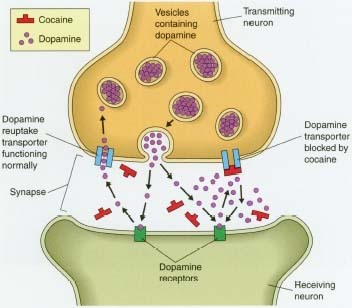Substance Abuse

Substance abuse is an unhealthy pattern of alcohol or drug use that usually leads to frequent, serious problems.
KEYWORDS
for searching the Internet and other reference sources
Drug abuse
Marijuana
Hallucinogens
Inhalants
Narcotics
Sedatives
Stimulants
The statistics are startling: In 1998, 1 out of every 10 young people ages 12 through 17 in the United States said they were a current user of illegal drugs. In that same year, over 10 million Americans under age 21 reported that they drank alcohol. Of this group, 5 million were binge drinkers, meaning they drank five or more drinks at one time. This group also included 2 million who were heavy drinkers, meaning they drank five or more drinks on five or more days during the previous month.
What Is Substance Abuse?
Substance abuse is an unhealthy pattern of alcohol or drug use that usually leads to frequent, serious problems at home, school, or work. Substance abuse also can cause stress in relationships. For example, a teenager might get into frequent arguments with parents or fights with friends. Substance abuse can even lead to trouble with the law. For example, a young person might be arrested for underage drinking or disorderly conduct. People who abuse substances also may put themselves in dangerous situations, such as driving under the influence of alcohol or drugs or having unsafe sex.
Substance abuse is one step along the path from occasional drinking or drug use to outright addiction (ad-DIK-shun). When people are addicted, they develop a strong physical or psychological need for a substance. One hallmark of addiction is tolerance (TOL-er-uns). This means that over time, people start to need more and more of a substance to get drunk or feel high. Another is withdrawal, which means that people who are addicted will have physical symptoms and feel sick if they stop using the substance.
Drugs and alcohol cause intoxication (in-TOK-sih-KAY-shun), the medical term for a temporary feeling of being high or drunk that occurs just after using a drug. Intoxication leads to changes in the way people think and act. For example, people may become angry, moody, confused, or uncoordinated. These changes increase the risk that people will make poor choices, have accidents that hurt themselves or others, or behave in a way that they will later regret.
What Causes Substance Abuse?
People give many reasons for starting to drink alcohol or use drugs. Some teenagers are looking for an easy way to escape stress at home, school, or elsewhere. Others hope that alcohol or drugs will help them fit in or make them seem older. Some may be using substances to "treat" or "self-medicate" depression or boredom. Still others are simply curious. Whatever the original reason, no one can say for sure which teenagers will go on to have a serious substance abuse problem. However, certain factors raise the risk that this will happen. Risk factors for substance abuse include:
- family history of substance abuse
- using alcohol or tobacco at a young age
- depression
- low self-esteem
- feeling like an outsider
- poverty
- child abuse or neglect
- family stress
Some of these factors can be changed or controlled by the teenagers themselves, but others cannot. However, that does not mean that those who come from stressed families or poor neighborhoods are doomed. Certain other factors raise the odds that young people will be able to cope with problems without turning to alcohol or drugs. These factors include:
- learning to do something well
- being active at school or in church
- having a caring adult to talk to
What Are Some Commonly Abused Substances?
People abuse an amazing variety of drugs, both legal and illegal. Legally available substances include alcohol, tobacco, chemicals in certain household products, drugs bought in a drugstore, and medicines prescribed by a doctor. Illegally sold substances include numerous street and "party" drugs.
Alcohol
Alcohol affects virtually every organ in the body, and longtime use can lead to a number of medical problems. The immediate effects of drinking too much include slurred speech, poor coordination, unsteady walking, memory problems, poor judgement, and the inability to concentrate. Drinking too much alcohol at one time can cause alcohol poisoning and sudden death. The recklessness that comes from drinking too much also is a leading cause of traffic accidents and other injuries. In addition, alcohol drinking by pregnant women is the cause of the most common preventable birth defect, called fetal alcohol syndrome. Long-term risks of heavy drinking include liver damage, heart disease, sexual problems for men, and trouble getting pregnant for women.
Everyone Isn't Doing It
Sometimes it can seem as if everybody else is drinking alcohol, smoking cigarettes, or using drugs. Monitoring the Future is a yearly survey, funded by the U.S. National Institute on Drug Abuse, that aims to find out just how common substance abuse really is among teenagers in eighth through twelfth grades. The facts are:
- 1999 was the third year in a row that drug use in this age group stayed the same or went down for most substances.
- Among eighth-graders, half had never drunk alcohol, 3 out of 5 had never smoked cigarettes, and 4 out of 5 had never used marijuana.
- Among twelfth-graders, 9 out of 10 had never tried cocaine or LSD, and 98 percent had never tried heroin.
Tobacco
Tobacco contains nicotine (NIK-o-teen), a highly addictive chemical. Nicotine is readily absorbed from tobacco smoke in the lungs, whether the smoke comes from cigarettes, cigars, or pipes. Smoking is the number one cause of preventable death in the United States. The long-term health risks include cancer, lung disease, heart disease, and stroke. Smoking by pregnant women also has been linked to miscarriage * , stillbirth * , premature * birth, low birth weight * , and infant death. Nicotine is readily absorbed from smokeless tobacco as well. Like smoking, dipping or chewing tobacco can have serious long-term effects, including cancer of the mouth, gum problems, loss of teeth, and heart disease.
Inhalants
Inhalants (in-HALE-ants) are substances that a person can sniff ("huff") or inhale to get an immediate "rush" or high. They include a varied group of chemicals that are found in household products such as aerosol sprays and cleaning fluids. Using inhalants even one time can lead to suffocation, severe mood swings, seeing or hearing things that are not really there, and numbness or tingling of the hands and feet, and even sudden death. Long-term use can lead to permanent brain damage, headache, muscle weakness, stomach pain, loss of the sense of smell, nosebleeds, liver disease, kidney damage, lung disease, violent behavior, irregular heartbeat, dangerous chemical imbalances in the body, and loss of control over urination.
Marijuana
Marijuana (mar-ih-HWAH-nuh; nicknames: pot, herb, weed, blunts, Mary Jane) is the most widely used illegal drug. It is typically the first illegal drug tried by teenagers. It is a mixture of dried, shredded flowers and leaves from the cannabis plant. Marijuana usually is smoked in a cigarette, pipe, or water pipe, but some users also mix it with foods or use it to brew tea. Short-term effects of marijuana use include euphoria * , sleepiness, increased hunger, trouble keeping track of time, memory problems, inability to concentrate, poor coordination, increased heart rate, paranoia * , and anxiety. Long-term risks include lung disease, changes in hormone levels, lower sperm counts in men, and trouble getting pregnant in women.
* miscarriage is the loss of a fetus before birth.
* stillbirth is the birth of a dead baby or fetus.
* premature (pre-muh-CHOOR) birth means born too early. In humans, it means being born after a pregnancy term of less than 37 weeks.
* low birth weight means born weighing less than normal. In humans, it refers to a baby weighing less than 5.5 pounds.
* euphoria is an abnormal, exaggerated feeling of well-being.
* paranoia refers to either an unreasonable fear of harm by others (delusions of persecution) or an unrealistic sense of self-importance (delusions of grandeur).
Hallucinogens
Hallucinogens (huh-LOO-sih-no-jenz) are drugs that distort a person's view of reality. They include LSD (short for lysergic acid diethylamide; nickname: acid), PCP (short for phencyclidine; nicknames: angel dust, loveboat), psilocybin (SY-lo-SY-bin; nickname: magic mushrooms), mescaline (MES-kuh-len), and peyote (pay-YO-tee or pay-YO-tay). People who use these drugs may lose all sense of time, distance, and direction. They also may behave strangely or violently, which can lead to serious injuries or death. Since everyone reacts differently to hallucinogens, however, there is no way to tell in advance who will have a bad experience.
- LSD is one of the most potent of all mind-altering drugs. It may be taken in pills. A drop may be placed on a square of paper and eaten. LSD can last a long time in the body—up to 12 hours. The physical effects of LSD use include dilated (widened) pupils, increased heart rate, higher blood pressure, sweating, loss of appetite, trouble sleeping, dry mouth, and shaking. The psychological effects are much more dramatic, however. Users may feel several different emotions at once, or they may swing from one emotion to another, euphoria to paranoia. They may have bizarre or terrifying thoughts, or they may see things that are not really there, like walls melting. Some users later have flashbacks, in which they relive part of what they experienced while taking the drug, even though the drug use has stopped.
- PCP can be snorted through the nose, smoked, or eaten. It has a bad reputation for causing bizarre and sometimes violent behavior. Other possible effects of PCP use include increased or shallow breathing rate, higher blood pressure, flushing, sweating, numbness, poor coordination, and confused or irrational thinking. High doses can lead to seeing or hearing things that are not really there, paranoia, seizures, coma, injuries, and suicidal behavior.
Same Problem,
Different Solution
In the United States, using and selling drugs such as marijuana and heroin is illegal, and people who break the drug laws go to jail. In the Netherlands, the government is trying a different approach that stresses treatment rather than punishment.
In the mid-1970s, the Netherlands was hit by a sharp upswing in heroin use. In response, the government launched a policy called harm reduction, which aims to lower the harmful effects of drug use for both users and society. The policy is based on the belief that "soft" drugs, such as marijuana and the related drug hashish (hah-SHESH), are less dangerous than "hard" drugs, such as heroin, cocaine, amphetamines, and MDMA. To encourage people not to try hard drugs, the government allows the sale of small amounts of marijuana and hashish in adults-only coffee shops, much the way alcohol is sold in bars. Hard drugs are still banned, but users are treated as people with an illness rather than as criminals.
There is much debate over how well this policy works. However, the number of drug addicts in the Netherlands is lower than in many countries. In addition, the average age of addicts is rising, which suggests that fewer young people are getting hooked. On the other hand, the rate of marijuana and hashish use has gone up in recent years, although it is still lower than in the United States. Another problem is the rise of Dutch crime gangs that are selling illegal drugs throughout Europe.
Stimulants
Stimulants (STIM-yoo-lunts) are drugs that produce a temporary feeling of euphoria, alertness, power, and energy. As the high wears off, however, depression and edginess set in. Stimulants include cocaine (ko-KANE; nicknames: coke, snow, blow, nose candy), "crack" cocaine, amphetamine (am-FET-uh-mean), methamphetamine (METH-am-FET-uh-mean; nicknames: speed, meth, crank), and crystallized methamphetamine (nicknames: ice, crystal, glass).
- Cocaine is a white powder that is either snorted into the nose or injected into a vein. Crack is a form of cocaine that has been chemically changed so that it can be smoked. Both forms are very addictive. Possible physical effects of cocaine and crack use include increased heart rate, higher blood pressure, increased breathing rate, heart attack, stroke, trouble breathing, seizures, and a reduced ability to fight infection. Possible psychological effects include violent or strange behavior, paranoia, seeing or hearing things that are not really there, feeling as if bugs are crawling over the skin, anxiety, and depression. In the end, cocaine addicts often wind up losing interest in food, sex, friends, family—everything except getting high.
- Methamphetamine is taken in pills, or it can be snorted or injected. Crystallized methamphetamine is a more powerful form of the drug that is smoked. Both forms are highly addictive. Possible physical effects of methamphetamine use are similar to those of cocaine. Possible psychological effects include trouble sleeping, crankiness, confusion, anxiety, paranoia, and violent behavior. In the 1960s and 1970s there was a popular expression, "Speed kills." This saying was meant to alert users to the sad end of methamphetamine addiction.

Narcotics
Narcotics (nahr-KOT-iks) are addictive painkillers that produce a relaxed feeling and an immediate high, followed by restlessness and an upset stomach. They can also be deadly. Drugs in this class include heroin (HAIR-oh-in; nicknames: smack, H, skag, junk), morphine (MOR-feen), opium (OH-pee-um), and codeine (KO-deen).
Heroin is made from morphine, a natural substance that comes from the poppy plant. It is a powder that is injected, snorted, or smoked, and it is highly addictive. Immediate effects of heroin use include a heavy feeling in the arms and legs, warm flushing of the skin, dry mouth, clouded thinking, and going back and forth between being wide awake and feeling drowsy. In addition, street heroin varies in strength, and users never know if they are getting a particularly strong dose. If they do, they can easily overdose ("OD"), resulting in coma or death. Long-term effects include collapsed veins, infection of the heart lining and valves, liver disease, and HIV/AIDS from sharing needles.
Sedatives
Sedatives (SED-uh-tivz), sometimes called as tranquilizers (TRANK-will-LY-zerz) or sleeping pills, include barbiturates or "downers." They are drugs that produce a calming effect or sleepiness. Physicians prescribe them to relieve anxiety, promote sleep, and treat seizures. When they are abused or taken at high doses, however, many of these drugs can lead to loss of consciousness or even death. Combining sedatives with alcohol is particularly dangerous. Possible effects of sedative abuse include poor judgment, slurred speech, staggering, poor coordination, and slow reflexes.

Club drugs
Club drugs are drugs that are mainly used by young people at parties, clubs, and bars. While users may think these are harmless fun drugs, research has shown that they can cause serious health problems and sometimes even death. When combined with alcohol, they can be particularly dangerous. Drugs in this category include MDMA (nicknames: ecstasy, Adam, XTC) GHB (nicknames: liquid ecstasy, Georgia home boy), Rohypnol (nicknames: roofies, roach), and ketamine (nickname: special K).
- MDMA or XTC combines some of the properties of hallucinogens and stimulants. Possible effects include euphoria, confusion, paranoia, increased heart rate, higher blood pressure, blurred vision, faintness, chills, and sweating. Because this drug is increasingly abused at dances, kids may forget to drink, become dehydrated, and need to be rushed to the emergency room for immediate treatment. Possible psychological effects include confusion, depression, sleep problems, anxiety, and paranoia. Recent research also has linked MDMA to long-term damage in parts of the brain that are critical for thought, memory, and pleasure.
- GHB, Rohypnol, and ketamine are often colorless, tasteless, and odorless, which makes it easy for someone to slip one of these drugs into another person's drink. As a result, these substances are sometimes called "date rape" drugs, because they have been used in rapes against women who were drugged unknowingly. To make matters worse, people may be unable to remember what happened to them while they were under the influence of one of these drugs.
Anabolic steroids
Anabolic steroids (AN-uh-BOL-ik STER-oidz) are drugs that are related to testosterone (tes-TOS-tuh-rone), the major male sex hormone. While these drugs have medical uses, many athletes and bodybuilders today are abusing them because they can increase muscle build-up with weight lifting or strength training. Although steroids may seem like a shortcut to improved sports performance and a more muscular body, they carry serious health risks. In boys and men, steroids can reduce sperm production, shrink the testicles, enlarge the breasts, and cause problems with sexual performance. In girls and women, they can lead to unwanted body hair, a deep voice, and irregular periods. Steroids also can damage the heart, liver, and kidneys. In teenagers, they can stunt bone growth, making the person reach a shorter final height than he or she would have otherwise. High doses of testosterone can also cause outbursts of aggressive or violent behavior ("steroid rage").

What Are Some Other Risks of Substance Abuse?
One thing most abused drugs have in common is that they can lead to unclear thinking and unpredictable behavior. Many also cause poor coordination and slow reflexes. It is little wonder, then, that substance abuse is closely tied to accidents and injuries. Alcohol and other drugs play a role in half of all fatal car crashes, which are the leading cause of death in young people. Alcohol also is involved in nearly 60 percent of fatal falls and at least half of adult drownings.
Substance abuse is also now the single biggest factor in the spread of infection with HIV (human immunodeficiency virus), the virus that causes AIDS, in the United States. It is a direct cause, because many drugs are injected into a vein, and people can catch HIV by using or sharing unclean needles. It is also an indirect cause, because people whose thinking is clouded by alcohol or other drugs are more likely to have unsafe sex, which increases their risk of catching HIV from an infected partner.
What Are the Signs of Substance Abuse?
Substance abuse can lead to physical and psychological problems that affect people's relationships and everyday lives. Typical warning signs of substance abuse in young people include:
- Physical: tiredness, unexplained health problems, red and glazed eyes, long-lasting cough
- Psychological: personality changes, sudden mood swings, crankiness, carelessness, low self-esteem, poor judgment, depression, loss of interest in friends and activities
- Social: new friends who abuse alcohol or drugs, problems with the law, changes in dress or appearance
- Home: starting arguments, breaking rules, withdrawing from family life
- School: loss of interest, bad attitude, drop in grades, frequent absences, getting into trouble
How Is Substance Abuse Diagnosed and Treated?
People who abuse alcohol or other drugs often need help to get help, since they may be tempted to deny the problem or feel as if their situation is hopeless. However, they should know that help is out there for those who seek it. The first step is to see a physician, psychologist, or counselor, or visit a health center for screening. To make a diagnosis, the health care professional will ask about present and past alcohol and drug use. If possible, the clinician also will talk to the person's family or friends. In addition, the clinician may sometimes order blood or urine tests for drugs.
Treatment for people who abuse alcohol or drugs but are not yet addicted to them usually centers around "talk" therapy. Several kinds of therapy may be used, either individually or in a group.
Cognitive therapy
Cognitive (COG-nih-tiv) therapy targets the faulty thinking patterns that lead to alcohol and drug use. One approach helps people understand and change the poor decision making that leads to a relapse (RE-laps), a slip back into their old, bad habits.
Group therapy
Individual therapy involves only the person and a therapist, while group therapy involves the person, a therapist, and other people with similar concerns. Group therapy often is used in substance abuse treatment, because it lets people get emotional support and practical tips from others who are struggling with the same kinds of problems.
Family therapy
Family therapy works on problems at home that may play a role in a person's alcohol or drug abuse. It may be especially helpful when there is severe conflict within the family or when there are other family members who are themselves depressed or abusing substances.
Violent Objections
Anyone who needs one more reason to avoid substance abuse should consider the latest statistics on alcohol, drugs, and violence.
- Alcohol is a key factor in more than 60 percent of assaults and over half of murders or attempted murders in the United States.
- Over 40 percent of convicted rapists say they were under the influence of alcohol or other drugs at the time of their crime.
- Almost two-thirds of reported child abuse and neglect cases in New York City have been linked to alcohol or drug use by the parent.
- Up to 35 percent of suicide victims have a history of alcohol abuse or were drinking shortly before they killed themselves.
Self-help groups
Self-help groups can be very helpful to both people with substance abuse problems and their family members. Many are 12-step groups, patterned on the 12 steps that are the guiding principles of Alcoholics Anonymous. Those who take part in such groups receive personal support from other people who have faced the same kinds of difficult situations.
Resources
Book
Packer, Alex J. Highs! Over 150 Ways to Feel Really REALLY Good… Without Alcohol or Other Drugs. Minneapolis: Free Spirit, 2000. For ages 13 and up.
Organizations
U.S. National Clearinghouse for Alcohol and Drug Information, P.O. Box
2345, Rockville, MD 20847-2345. This government clearinghouse is the
world's largest resource for current information and materials on
substance abuse and addiction.
Telephone 800-729-6686
http://www.health.org
U.S. National Institute on Alcohol Abuse and Alcoholism, 6000 Executive
Boulevard, Bethesda, MD 20892-7003. This government institute provides
in-depth information on alcohol abuse and addiction.
Telephone 301-443-3860
http://www.niaaa.nih.gov
U.S. National Institute on Drug Abuse, 6001 Executive Boulevard,
Bethesda, MD 20892-9561. This government institute provides detailed
information about drug abuse and addiction.
Telephone 301-443-1124
http://www.drugabuse.gov
Websites
ClubDrugs.org
. The National Institute on Drug Abuse launched this site to provide
reliable information about popular club drugs.
http://www.clubdrugs.org
Join Together Online. This site, a project of the Boston University
School of Public Health, features the latest news on substance abuse.
http://www.jointogether.org
SteroidAbuse.org
. The National Institute on Drug Abuse set up this site to provide facts
about anabolic steroid abuse.
http://www.steroidabuse.org
Comment about this article, ask questions, or add new information about this topic: